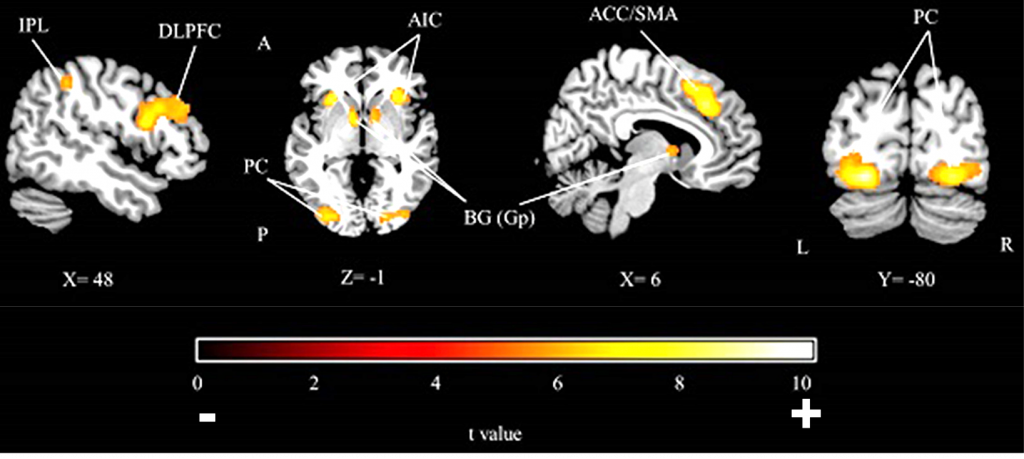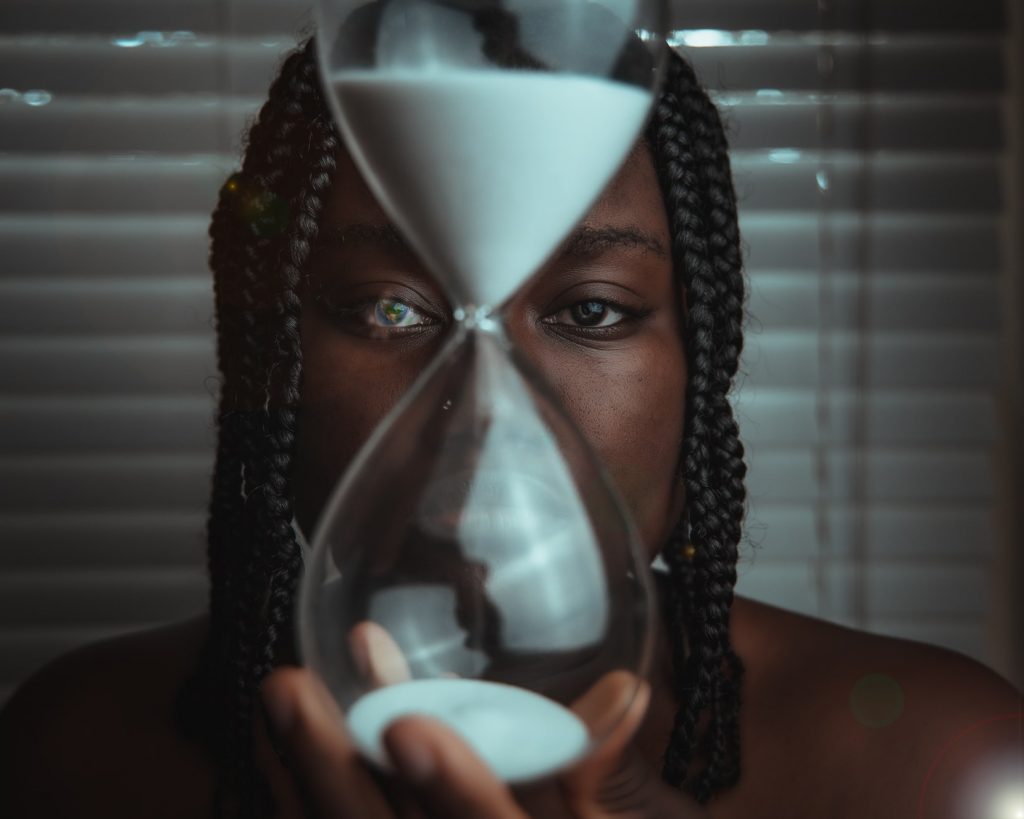This post is also available in Dutch.
What goes “tick-tock” in the brain? Yes, we all have an internal clock in our brains, enabling us to keep track of time.

IPL, Inferior parietal lobule; DLPFC, Dorsolateral prefrontal cortex; AIC, Anterior insular cortex; PC, Peristriate cortex; BG, Basal ganglia; Gp, Globus pallidus; ACC, Anterior cingulate cortex; SMA, Supplementary motor area; A, Anterior; P, Posterior; L, Left; R, Right. The original figure is taken out of the publication Üstün S, Kale EH and Çiçek M (2017) Neural Networks for Time Perception and Working Memory. Front. Hum. Neurosci. 11:83.
The brain’s machinery of time
An intriguing question is to determine how our internal clock is represented in the brain. Some researchers think that the internal rhythm is produced by a general structure – let’s call it “the central clock” – a network of brain areas that would be used for every type of time processing. This general “central clock” would work together with a more specialized network – “the local clock” – the location of which would depend on the type of task being done. For example, let’s say I’m listening to a metronome ticking, and then I have to reproduce the same pace by tapping with my fingers. This task requires my “auditory+motor timing”, therefore both auditory and motor areas of the brain will be part of this local clock network. However, if this same pace was first presented to me with flashing signals on a screen, then it’s about my “visual+motor timing”, thus engaging both my visual and motor areas this time (as well as the central clock).
Collecting info to predict time
Within the central clock network, there are different types of neurons with different roles to play in time perception. Some populations of neurons seem to reflect the remaining time before the expected event – How much time before the next flash of light? – while others fire up just after, as if measuring the elapsed time after the last flash. In the end, by providing complementary information about the timing of this event, it contributes to a better prediction and anticipation of similar upcoming events.
And yet, sometimes our time machine goes wrong…
How attention twists time perception
One of the main sources of time distortion is attention. The less you pay attention to something, the shorter your time perception becomes. The reverse is also true. Participants were tested twice while watching pairs of stimuli on screen. Sometimes they had to pay attention to the duration and at other times to both the duration and color, so their attention was divided and they paid less attention to duration. Interestingly, when the task was to judge which stimulus was the shortest, participants had the tendency to underestimate time more when they were simultaneously attending to colors. Moreover, the central clock network was significantly less active when attention was divided.
What about emotions?
Emotions also skew your sense of time. If you show participants emotional and neutral pictures for a given duration, the one with the emotion will be perceived as longer. A striking example is with negative emotions like fear and anxiety, where the distorting effect between emotions and time perception is mutual. Let’s take the example of fear. In a situation of distress, when participants are delivered more painful stimulations, they tend to find the time longer. And reciprocally, when they believe the painful stimulation lasts longer, they overestimate the level of pain.
Investigating the perception of time is fundamental, as it regulates how we anticipate and predict actions and also affects the way we behave and the way we react to our environment. Many factors seem to influence the way we experience time; among them, attention and emotions seem to play a major role. That’s why it is so challenging to understand the illusion of time and how our representation of it can be biased.
Photo by Tasha Jolly via Unsplash
Author: Kim Beneyton
Buddy: Rebecca Calcott
Editor: Marisha Manahova
Translation: Ellen Lommerse
Editor translation: Jill Naaijen
